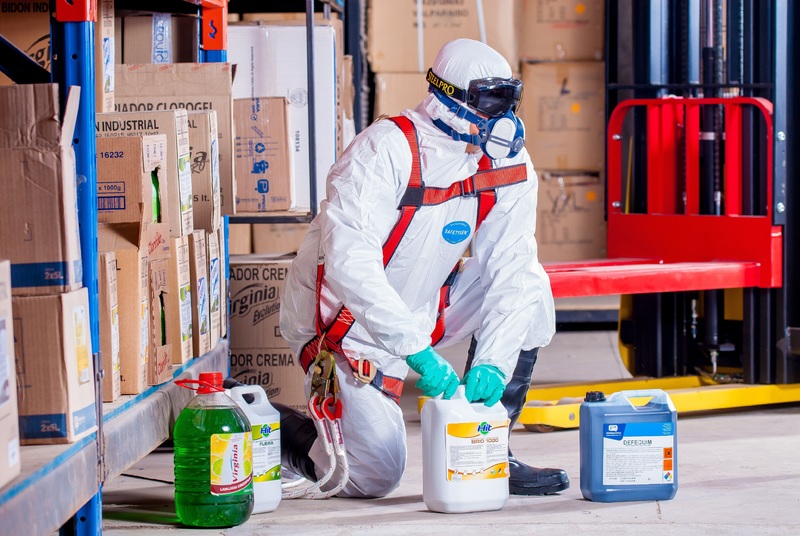- September 12, 2018
- Posted by: David Marshall
- Category: Management, Manufacturing, Safety

When you run a manufacturing facility, one of your biggest concerns could/should/will always be workplace injury. Manufacturing, with all of its moving parts and massive machines, are a risky place to work. And you can talk about safety all you want, but that doesn’t mean your workers will necessarily be safer.
When I was at Robroy Industries, we implemented a few safety initiatives to help reduce workplace injury and keep our associates safe.
When I first arrived, my plan was to turn safety on its head, so I made the associates responsible for safety, not the management. The people working on the floor were the ones who came up with a new safety program, they wrote the safety rules, designed the training program, and even rolled it out. When it was in the hands of the managers, many of whom did not work on the floor at all, safety was their responsibility, and the associates didn’t feel like they had any skin in the game, so they didn’t take it as seriously.
 We called this the SHIELD council (Safety, Habits, Interaction, Education, Lifestyle, Diligence), and the only role the managers played was to ensure SHIELD’s recommendations were followed and executed. We even closed the company down for a day so we could roll out the program when it was time.
We called this the SHIELD council (Safety, Habits, Interaction, Education, Lifestyle, Diligence), and the only role the managers played was to ensure SHIELD’s recommendations were followed and executed. We even closed the company down for a day so we could roll out the program when it was time.
This was a major part of the reason we were able to drop our workers comp costs from half a million dollars per year to less than $30,000.
Another way we reduced workers comp was to give all employees a medical test in order to establish a baseline for their health. And we started doing it for all new employees as well. This helped us find any old workplace injuries, or even identify potential injuries on the horizon. This way, workers weren’t able to claim old injuries that happened a few years earlier as a new injury. We knew that if they had a back injury already, they couldn’t claim a “new” back injury. This reduced a lot of fraudulent and exaggerated claims, which let us get off the Texas Workers Comp program and create a private plan instead.
We also implemented a policy that any capital equipment had to go through a hazards and operability review. We asked that the suppliers, manufacturer, and even our own operators ensure that we had every safety device, mechanism, and method in place that was technologically known at the time. These included safety brakes, shut-off switches, safety sensors, and guards.
We looked for systems that would do things like shutting down a complex piece of equipment if one sensor went off. We also required operators before shifts and at the end of shifts to go through a “cockpit check” that would ensure the equipment was working correctly and comprehensively.
And I implemented a zero tolerance policy for safety violations. Safety is one of my four non-negotiables and I was so inflexible on this that I never gave people a second chance to violate it. I remember one incident where this resolve was put to the test.
We had a conveyor machine that moved pipe along at a steady pace without stopping. The machine was controlled by hydraulics, which won’t recognize if there’s an obstruction in the way. One of our associates wanted to get from one side of the machine to the other, but rather than walk around it, or go to a catwalk to cross over the moving pipe, he thought he could just run across the moving pipes. If his foot has slipped, he would have fallen between a couple pieces of pipe, gotten stuck, and could have been cut in half.
So he was fired immediately, because this was not a behavior we could afford to have in our organization. If we let him slide, he might do it again, or someone else may think it was acceptable behavior. So while he paid the price — remember this is a non-negotiable for a reason — it ensured no one else tried that little stunt themselves.
By creating and following these strategies, we were able to greatly reduce the number of workplace injuries, reduce employee absenteeism, reduce workers comp costs, and most importantly, keep our people safe. It made a huge difference in the attitudes toward safety when all the employees knew they were responsible for it, rather than letting the responsibility lie on the managers.
I’ve been a manufacturing executive, as well as a sales and marketing professional, for a few decades. Now I help companies turn around their own business, as well as speak at conferences, trade shows, and chambers of commerce. If you would like more information, please visit my website and connect with me on Twitter or LinkedIn.
Photo credit: PXHere.com (Creative Commons 0)

